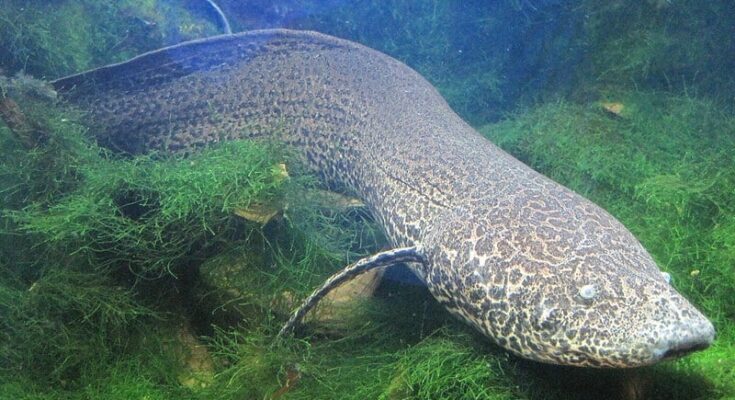
A recent study reveals that Methuselah, the world’s oldest aquarium fish, might be much older than we previously thought, possibly even more than a hundred years old.
Methuselah is a female Australian lungfish, and she lives at the Steinhart Aquarium in San Francisco, California. She’s been a resident of the aquarium since 1938, when she, along with over two hundred other fish from Fiji and Australia, was sent to the U.S.
Nobody at the aquarium has ever been completely sure about Methuselah’s age. However, up until now, experts believed she was around 84 years old, making her the oldest fish in captivity.
DNA Age Clock
The elderly fish, who enjoys belly rubs and gets hand-fed by her caring keepers, doesn’t seem to be slowing down, and this has made it tricky to figure out her true age. To solve this mystery, scientists decided to determine her age using a special “DNA age clock.”
In their research, the scientists looked at Methuselah’s DNA and compared it to the genetic material of other Australian lungfish. They wanted to see how much wear and tear her DNA had gone through over the years.
The results suggest that she’s probably around 92 years old, but because this kind of experiment can have some uncertainty, she could potentially be as old as 101 years. The full study will be published later this year.
Charles Delbeek, who oversees aquarium projects at Steinhart Aquarium, mentioned, “Although we know Methuselah came to us in the late 1930s, there was no method for determining her age at that time.”
Examination of DNA of thirty Australian lungfish
The scientists examined the DNA of thirty Australian lungfish, some from captivity and some from the wild. This also included two other lungfish residing at the Steinhart Aquarium. Their focus was on studying something called methylation in the fish’s genetic material.
Methylation is a biological process in which methyl groups—carbon atoms connected to three hydrogen atoms—get added to the DNA molecule.
In this, they can figure out how much time it takes for Methuselah to accumulate the specific number of methyl groups found in her DNA.
Life span of Methuselah
The researchers don’t know for certain how many more years aquarium fish Methuselah might live, but according to David Roberts, one of the researchers from the Australian River Institute at Griffith University and a co-author of the study, things are looking up.
At Steinhart Aquarium in San Francisco, a new DNA analysis suggests Methuselah, an Australian lungfish, could be the oldest fish in an aquarium anywhere in the world. pic.twitter.com/8cjkhICdjH
— CNN (@CNN) September 25, 2023
He mentioned that as we gather data from more individuals of this species, our DNA clock will get better at telling us their ages, and this will help us uncover the mystery.
However, regardless of her remaining years, there’s something remarkable to note. David Roberts added, “No other lungfish that we know of has reached an older age than Methuselah.”
Lungfish or living fossils
In the wild, you’ll only find Australian lungfish in specific rivers in Queensland, Australia. These rivers can be pretty unpredictable. When there’s not much rain, the rivers can become still, and that means there’s less oxygen in the water.
When it gets too tough for the fish to breathe underwater, they can swim up to the surface and take in the air using a single lung, which is why they’re called “lungfish,” as explained by the Australian Museum.
People often call lungfish “living fossils” because they haven’t really changed much over millions of years. The oldest fossil of a lungfish from the Neoceratodus genus dates back to around 380 million years. This was a time known as the Devonian period, which took place from 419.2 million to 358.9 million years ago, according to the Australian Museum.
However, the thing is that the future of these lungfish is getting less certain. Human construction projects such as dams have changed their homes, and that’s putting them at risk. Right now, they’re even on the International Union for Conservation of Nature (IUCN) Red List of Threatened Species. They are listed as endangered.
A tool to preserve ancient species
The researchers believe that the newly developed DNA age clock could be a valuable tool in safeguarding this ancient species.
According to Benjamin Mayne, a molecular biologist at the Commonwealth Scientific and Industrial Research Organisation (CSIRO) in Australia and the lead author of the study, having accurate information about the ages of fish in a population, including the oldest individuals, is crucial for managing them effectively.
He explained, “This tells us just how long a species can survive and reproduce in the wild, which is critical for modeling population viability and reproductive potential for a species.”



